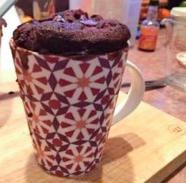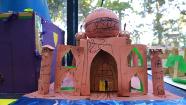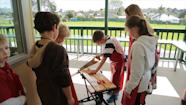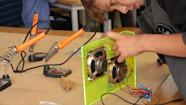Muffin in a mug
Making microwave muffins is a processed outcomes - food technology project that is quick and easy for teachers to manage in a primary classroom.
For Dorothy's years 5–6 class, a farewell for the student teacher provided an authentic and local context for the students to design and develop muffins for the occasion.
Planning for practice

To start the project, teacher Dorothy Hutton gave her class the Microwave mug cake recipe.
Dorothy organised the basic ingredients from this recipe and students brought some unique ingredients to change the flavour. They brought items such as coconut, chocolate, raspberries, and Oreos.
Students recorded their planning for practice as they developed their unique muffins.
Brief development
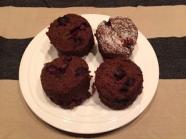
Attributes
The class agreed on some attributes for a quality muffin.
- The muffin will rise above the lip of the cup when cooked.
- The recipe and the mug size will serve four people (using accurate measurements of ingredients to ensure a quality outcome).
- The muffins will be moist and soft, not dry and hard when eaten.
- The muffins can be made one at a time in the microwave.
Outcome development and evaluation
Students identified different types of functional modelling that could be used in outcome development – thinking, talking, drawing, physical mock-ups, and computer simulation. They then identified which of these they used in their muffin making.
Student examples of functional modelling (PDF, 110 KB)
Students worked in pairs to make the muffins. The first trial muffin overflowed the mug so the students used the same quantities but made it in two smaller mugs. Once cooked, they cut the muffins in half.
The students had to follow the food handling safety rules such as washing their hands before they started baking and getting the teacher to remove the hot mugs from the microwave.
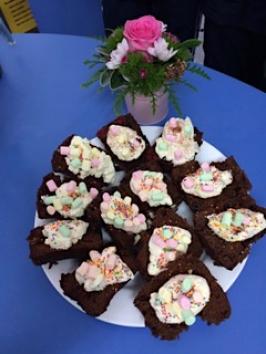
Evaluation and feedback comments
Teacher feedback comments
- “It took all morning in between other things to get 12 muffins made.”
- “This was a quick recipe and something the students could do at home. One student was very motivated to make them for school lunches for her siblings and herself.”
Student evaluations
- “We learnt from our mistake which was not to eat them straight away and save them until they were all made to eat together for morning tea, because some hardened and weren’t as good as the ones eaten straight away.”
- “Putting in broken up Oreos as the unique ingredient made the muffins quite hard.”
- “They were all eaten and they were delicious.”
- “We could look at other types of muffin in a mug recipes. They could be part of a school lunch and or savoury flavours.”
Curriculum integration
Maths
The students had been focusing on lots of hands-on measurement tasks for their new strand in mathematics. The student teacher made jelly with different coloured layers and the students estimated the volume and capacity. The muffin making project also gave students the opportunity to make links to measurement, both in weight and volume.
Literacy
Literacy was integrated with a focus on writing at level 3 and using correct subject specific vocabulary.
Related videos
Building technology inquiries in years 1–6 (02:47)
Shannon Maloney talks about building rich technology units within a programme of inquiry in years 1–6.
Planning for technology at primary (03:59)
Jude Black and Diana Comp describe their approach to planning at Green Bay Primary.
Technology and science work well together (04:39)
Steve Jeffares and Ronnie McHale share how their students deepen conceptual understandings through integrating multiple knowledge bases.

